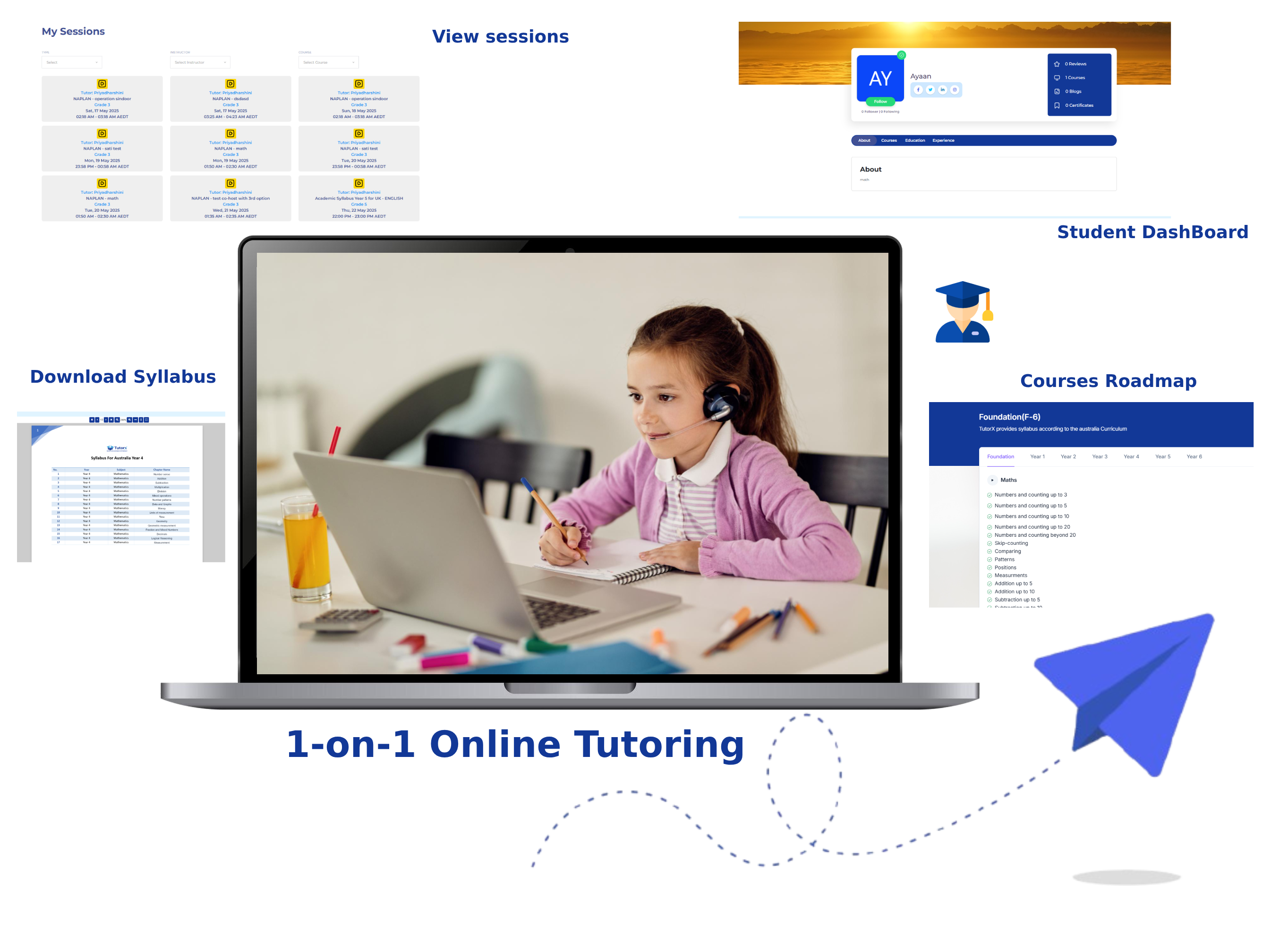Book a free trial session and start your personalized learning journey with our expert tutors.
Fill out the form below and one of our experts will contact you shortly.
Everything You Need, All in One Place
At The TutorX, we believe learning should be clear, focused, and at your fingertips. That’s why we’ve built a smart and user-friendly dashboard to empower every student on their academic journey. From live sessions and homework to performance tracking and resources—everything is seamlessly integrated to help you stay ahead with confidence.

In the United States, Middle School typically includes Grades 6 through 8, serving students aged approximately 11 to 14. This stage marks a critical transition from elementary learning to more independent, subject-specific instruction and sets the foundation for high school success. Students in middle school are introduced to a broader range of subjects taught by specialized teachers and are encouraged to develop analytical thinking, problem-solving, and organizational skills. The curriculum focuses on preparing students for high school with greater academic rigor and personal responsibility.
| Subject | Description |
|---|---|
| English Language Arts (ELA) | Reading comprehension, literary analysis, grammar, vocabulary, and writing across genres. |
| Mathematics | Pre-Algebra, Algebra, ratios, geometry, and data analysis. |
| Science | Life science, physical science, earth/space science, and beginning scientific inquiry. |
| Social Studies | U.S. history, world history, geography, civics, and economics. |
| Electives | Arts, music, physical education, computer science, world languages, and technology courses. |

In Grade 6, students begin to transition from generalist instruction to subject-specific learning. English classes introduce literary themes and narrative structure, while math focuses on ratios, division of fractions, expressions, and equations. Science often covers Earth science, including weather, geology, and planetary systems. Social studies explore ancient civilizations and early world history. Emphasis is placed on developing study habits, reading for meaning, and writing with clarity.
Grade 7 deepens academic challenges and emphasizes critical thinking. Math typically covers pre-algebra, including linear equations, inequalities, and probability. Science may focus on life sciences, such as cells, genetics, ecosystems, and human biology. ELA expands into argumentative and analytical writing, while social studies often include world geography and cultures. Students begin to make real-world connections through projects and research.
Grade 8 prepares students for high school, often introducing algebra or geometry in mathematics. Science tends to focus on physical science — covering topics like forces, motion, energy, and matter. English classes work on advanced reading comprehension, textual analysis, and structured essay writing. Social studies often focus on U.S. history, especially the Constitution, Civil War, and modern America. Students are expected to show independence in learning, effective time management, and collaborative skills.
Administrator

Lorem Ipsum is simply dummy text of the printing and typesetting industry. Lorem Ipsum has been the industry's standard dummy text ever since the 1500s, when an unknown printer took a galley of type and scrambled it to make a type specimen book.
Lorem Ipsum is simply dummy text of the printing and typesetting industry. Lorem Ipsum has been the industry's standard dummy text ever since the 1500s, when an unknown printer took a galley of type and scrambled it to make a type specimen book. It has survived not only five centuries, but also the leap into electronic typesetting, remaining essentially unchanged. It was popularised in the 1960s with the release of Letraset sheets containing Lorem Ipsum passages, and more recently with desktop publishing software like Aldus PageMaker including versions of Lorem Ipsum.
Reach out to TutorX your questions spark the path to smarter learning
